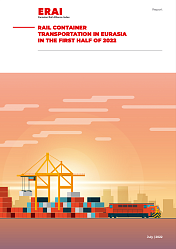The numbers are impressive, considering that in the first two months of the year, China was the epicentre of the coronavirus outbreak. In march, trains started operating again, with the exception of a few. This partly explains the boost in volumes in March. In that month, the number of containers and open wagons on the China-Europe train increased by 36 per cent and 30 per cent year-on-year respectively.
The figures of the Chinese national railway company were reported by the Economic Information Daily in China last week. In the first quarter of this year, the number of China-Europe trains and the number of goods dispatched increased by 15 per cent and 18 per cent respectively year-on-year, the report reads.
Record figures
The number of China-Europe trains operated amounts to a total of 1941, equalling 174,000 TEUs of cargo. A full container rate of 98.1 per cent was recorded. Among the train journeys, the number of outbound trips was 1049, carrying a total of 95,000 TEUs. This indicates an increase by 24 and 28 per cent year-on-year, respectively.
In March, China-Europe trains transported a total of 809 containers and 73,000 TEUs, setting a monthly record. Additionally, these shipments had a 98.9 per cent full container rate. Among them, there were 503 outbound trains carrying 46,000 TEUs. Of these outbound trains, the full container rate was even 100 per cent.
Medical supplies
The transportation of medical supplies to battle the coronavirus has certainly contributed to the rise in volumes, the company says. «In response to the increasingly severe epidemic situation in Europe and the gradual increase in demand for epidemic prevention materials, the railway company gives priority guarantees for the transport of relief materials», the report says.
The first train carrying corona-related aid materials to Europe left Yiwu on 21 March. By the end of March, China-Europe trains shipped a total of 333,800 aid materials, equalling 494 tonnes in cargo mainly to Italy, Germany, Spain, Czech Republic, Poland, Hungary, the Netherlands and other countries.
Corona measures
Since the outbreak of the coronavirus, the state-owned railway group has taken several steps to ensure that the China-Europe trains remain a success. The first has been to ensure safe and continuous flow of traffic, as the pandemic is still very much alive in Europe.
For example, it has carried out a pilot of paperless information exchange with the customs authorities at the border point of Manzhouli, the crossing of the northern route. But the company has also intensified international cooperation to better coordinate train traffic between China and Europe. Part of its strategy is a regular, weekly train traffic forecast to be able to solve potential problems proactively.
Last, it has increased efforts to organise train traffic in various parts of the country. It aims to be in close contact with all regions and platforms, understanding the stocking situation and shipping arrangements in detail. In this way, it is hoping to understand the needs of the market and pursue a shift from sea and air freight to the railway.
Centralised approach
Thus, the New Silk Road can expect a more centralised approach from China. According to the Chinese media source, the first concrete step is a more rationalised train schedule plan, which takes into account the overseas market and return supply of rolling stock. In this way, the train schedule can be better utilised, China National Railway Group Limited is reported explaining.




